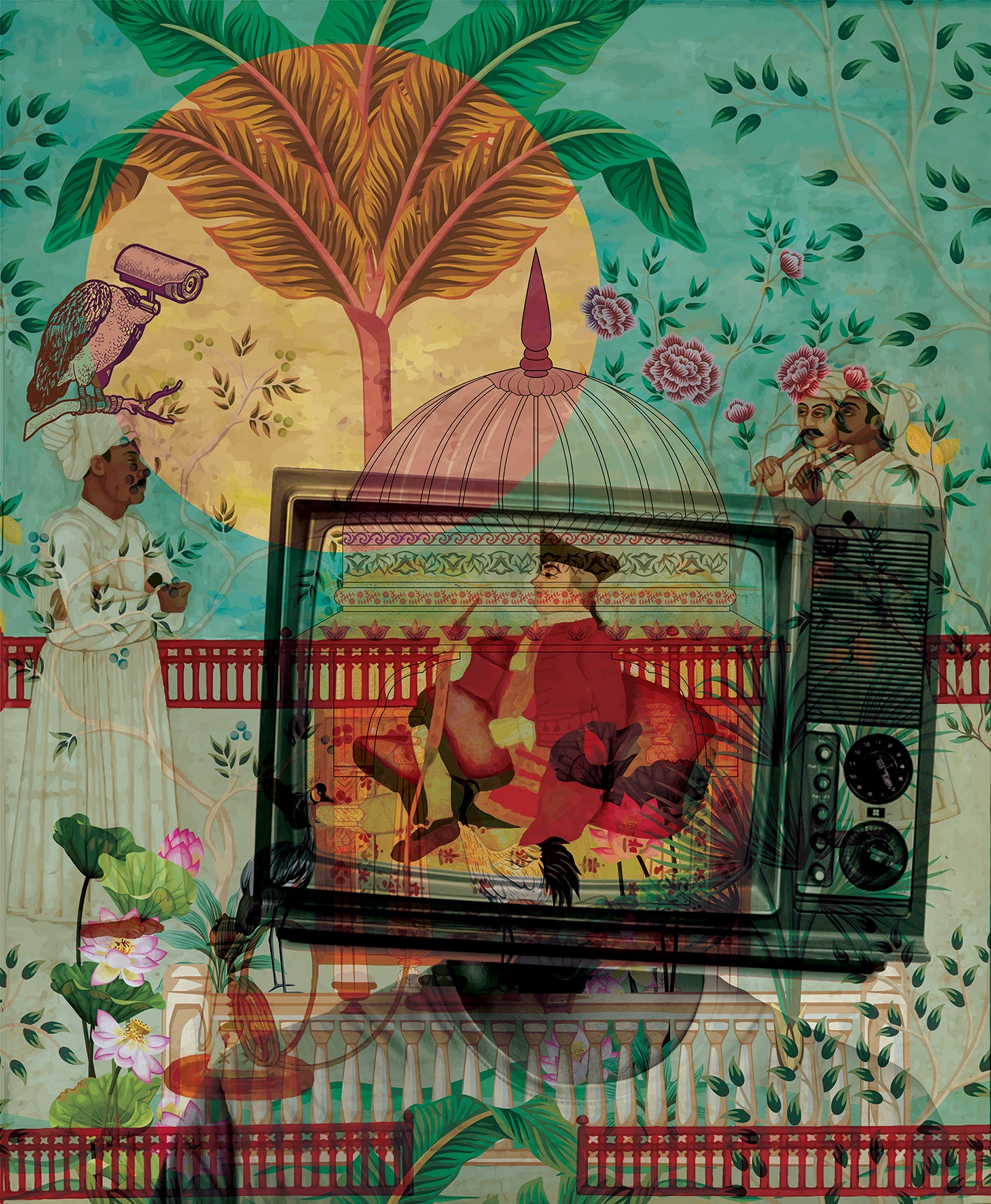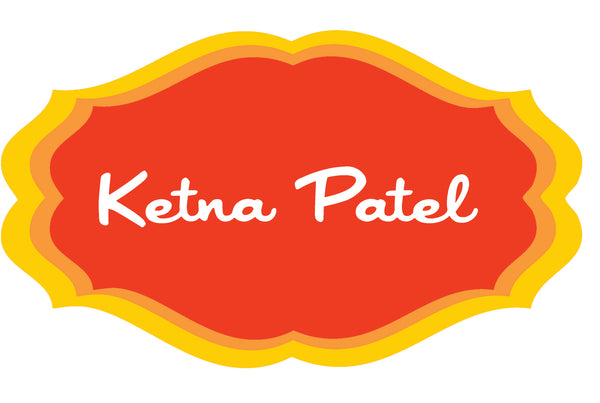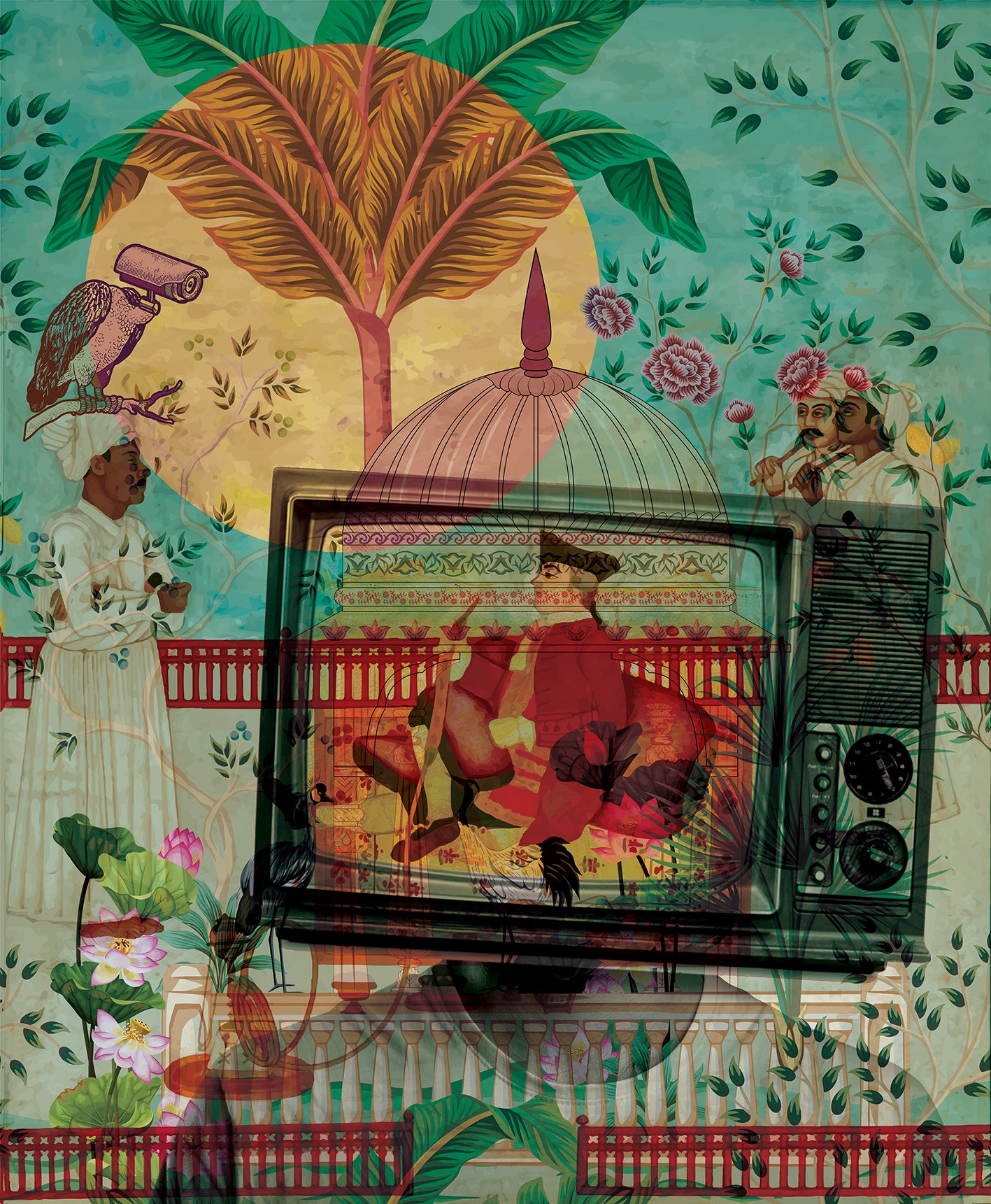KETNA PATEL ART STUDIO
TELL A VISION
TELL A VISION
Couldn't load pickup availability
Share
Tell a Vision: A Surreal Orwellian Odyssey
In Ketna Patel's enigmatic composition, "Tell a Vision," the viewer is thrust into a surreal Orwellian realm where the past and future collide in a haunting visual narrative. At the heart of this dystopian tableau stands a representative of the British East India Company, a symbol of imperial power, trapped within the confines of a black and white television screen that eerily replaces the head of a man.
The juxtaposition of the television screen and the individual represents the dehumanising influence of mass media and technology on the individual's identity. The man's transformation into a screen symbolises the all-encompassing control that visual media can exert, not only distorting one's perception of reality but also erasing individuality in the process.
Surrounding the captive figure, the indigenous Indian men and lush foliage serve as a stark contrast to the sterile, monochrome confines of the television screen. They represent the resilience and enduring cultural heritage of India in the face of foreign domination. Patel's choice to depict these elements in vibrant colour amidst the grayscale landscape emphasises the indomitable spirit of the Indian people.
The eagle, with its head transformed into a CCTV camera, becomes a metaphor for surveillance and control. It reflects the ever-watchful gaze of authority and the erosion of personal privacy in the modern age. This surreal fusion of nature and technology serves as a chilling commentary on the loss of personal freedom in a world increasingly governed by surveillance and propaganda.
"Tell a Vision" is a thought-provoking exploration of the power dynamics at play in colonialism, media, and surveillance. Patel's juxtaposition of elements encourages viewers to reflect on the enduring impact of history and the dangers of surrendering one's individuality to external influences. It serves as a stark reminder of the importance of preserving cultural identity and personal autonomy in the face of oppressive forces, making it a compelling and evocative addition to the Orwellian art tradition.
Each Fine Art Print is titled, numbered and signed in Ketna’s handwriting.
Depending on each composition’s ‘personality’, colour spectrum and destined geographical location, the Artwork is printed either as a C-Type print on Fuji gloss paper or as a Giclee print on Hahnemuhle Photo Rag paper. (For humid countries e.g Singapore, C-type Fuji paper is advised as it is does not let moisture and mould through)
All Prints are made at the most accredited and reputable Printing studios in London, Singapore or New Delhi, using the best quality fine art archival paper available.
The studio meticulously keeps account of each numbered print, including when and who it was sold to, so there is no chance of duplication.
Each Fine Art Paper Print comes in an edition of 50, so for the three sizes, the total prints ever made will be 150.
Each Metal Print comes in an edition of 25, so for the three sizes, the total prints ever made will be 75.
Each Acrylic Print comes in an edition of 10, so for the three sizes, the total prints ever made will be 30.
For each composition, there are up to 5 Artists Proofs for colour and production quality checks. The total edition for each artwork is therefore 260.
Each Print is made to order. Please allow 10 working days for delivery.


